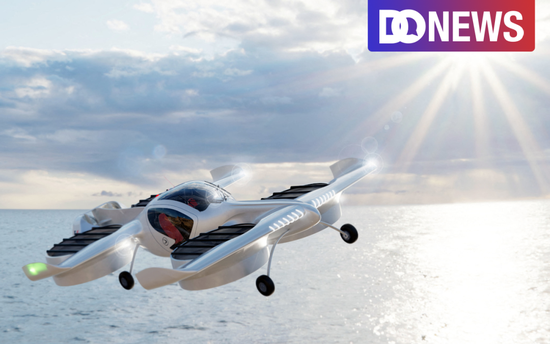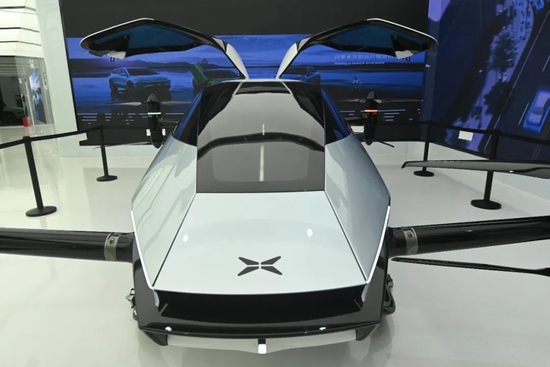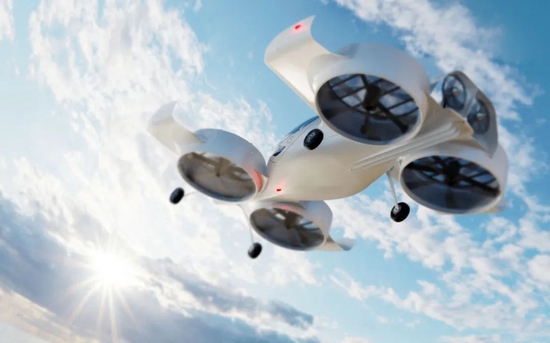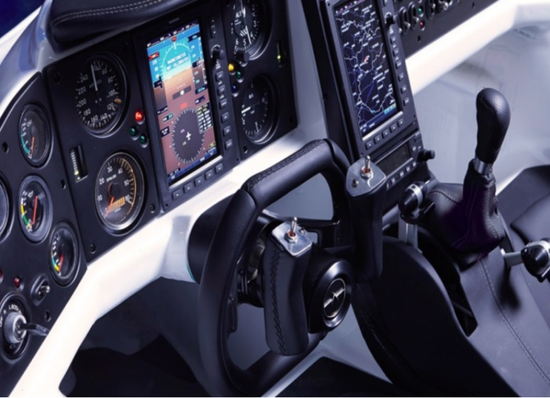 Title image | IC Photo
Title image | IC PhotoWelcome to the WeChat subscription number of “Sina Technology”: techsina
Written | Edited by Cao Shuangtao | Yang Bocheng
Source: DoNews
As the intersection of the three major fields of automobile, aviation and new energy, “flying car” is also the most important application scenario of new materials, artificial intelligence and new generation information technology. In the past few years, it has been praised as It is the tuyere among the tuyere, which leads to the continuous pursuit of capital.
Boeing acquired Aurora Flight Sciences, an aviation technology company, and will jointly develop electric vertical take-off and landing aircraft with Porsche; Toyota invested in Joby Aviation and Sky Drive; Geely Automobile acquired Terrafugia in the United States and invested in Volocopter in Germany.
Xiaopeng Motors established Xiaopeng Huitian after acquiring Huitian Airlines. In October 2021, it completed a series A financing of more than 500 million US dollars, with a pre-investment valuation of 1 billion US dollars, setting a financing record in the field of flying cars in Asia; Tencent is even more Twice led an investment in Lilium.

On this track, none of the traditional aviation giants, automobile manufacturers, emerging technology companies, and Internet giants seem to want to miss this “future” opportunity. Morgan Stanley predicts that by 2040, the market will reach $1.5 trillion.
However, when this trillion-dollar market has not really ushered in expansion, the early player Kittyhawk has no sign of cold.
Kittyhawk, founded in 2010, was founded by Sebastian Thrun, the father of Google’s self-driving car, and Google founder Larry Page invested and made a bet. As early as 2012, the company’s product Heaviside has passed the U.S. Air Force’s manned flight test program.
Since then, this product has participated in the US military’s forward-looking high maneuvering aircraft project Agility Prime. In 2020, Kittyhawk will also launch the second generation of Heaviside, which can be built into a complete system with air force radar, ground handling and other facilities.
The future development plan of Kittyhawk is to build a fully autonomous air taxi, and to control the flight cost below $1/1 mile. According to Kittyhawk’s official website, the air taxi will be built with the military Heaviside foundation, and the project is already underway.
But now Kittyhawk suddenly announced its shutdown, which undoubtedly poured cold water on the hot flying car industry. But in fact, if flying cars want to land on a large scale in the future, there are still many challenges.
01.
Many technical problems to be solved
Safety is the first and must-have problem for flying cars. Only after this problem is resolved, can we talk about subsequent commercialization. However, in order to ensure foolproofness during the flight, the technical requirements for the control of flying cars are extremely stringent.
In terms of benchmarking driverless technology, in addition to the impact of various factors such as people, vehicles, and roads on the driving effect, it must also consider uncertain factors such as traffic accidents and violations. Although the flying car is in the process of flying at low altitude, the environment it faces is not as complex as that of unmanned driving.
However, in the process of take-off and landing, it is necessary to make more accurate judgments on the environment and feasible areas of the take-off and landing area. During the flight, it is also necessary to face the disturbance of the airflow at any time. And this is very demanding for the sensors mounted on flying cars.
In addition, these sensors must also face the three-dimensional environment, resist noise interference, and have a monitoring distance of more than 500 meters. But the problem is that existing sensor technology is difficult to meet this rigid requirement.
Taking lidar technology as an example, it is mostly used in open spaces with good lighting and distinctive features. But in fact, during the flight of the flying car, the environment it faces is more complex and diverse. For example, dense smoke at low altitudes caused by fire weather, satellite signal failure caused by typhoon weather, poor visibility in low-altitude areas of cities caused by foggy weather, and so on.
To make a flying car fly, it must have power to lift. Considering its actual flight scene at low altitude, power battery technology is currently widely favored by the industry. However, it is worth noting that the charging ability, energy storage capacity and cycle life of flying cars are very demanding, and they are completely different from those of road electric vehicles.
For example, a flying car battery can be recharged 1,500 times in a year, which is actually equivalent to a power battery with a range of 400 kilometers, which needs to travel 600,000 kilometers in a year.
A more important problem is that the functions of the power batteries themselves will limit each other. For example, fast charging is likely to reduce the number of charging cycles, and high energy density will reduce the charging speed. However, this problem is difficult to solve because it is determined by the physical properties of power battery materials.
In addition, it is not something that can be done overnight to solve other problems of the power battery. Taking the automatic heating technology in power batteries as an example, it puts 10-micron nickel foil into the battery to help quickly heat up to 60°C, allowing the battery to discharge and charge quickly, which can ensure that the flying car is hovering or landing. , reserve a certain amount of power for use.

However, this seemingly simple technology took 10 years to gradually achieve breakthroughs abroad, and it can only be applied to the scene of flying taxis. Next, if you want to develop a battery with higher energy density and a charging time of 5-10 minutes, the time, manpower and financial resources required are estimated to be larger, which will also affect the commercialization process of flying cars to a certain extent. advance.
At the same time, another premise to ensure that the car can fly is that the relevant materials used in the body of the flying car must be light enough, so as to ensure that the mechanical wing has sufficient lift and pulling force, but this brings greater weight to the lightweight technology of materials. challenge.
At present, the ideal lightweight material recognized in the industry is magnesium alloy material, but this material has a fatal disadvantage: that is, the material properties will decrease with the increase of temperature, and the deformation difficulty is higher than that of steel and aluminum.
Although high-strength steel and ultra-high-strength steel can meet the light and heavy requirements of flying cars at the same time, the extension space of this material is relatively small, forming is difficult, and cracking and springback may occur even after forming.
In addition to materials, the multi-objective structure fine topology design simulation method can also help reduce the body weight. For example, the optimized design of the front connecting beam can reduce the initial weight of 50kg to 36kg; the swing arm support can be reduced from 3.5kg to 2.7kg. But if you want to achieve this, you need a lot of simulation tests by the team behind it, but this will inevitably increase the cost of early research and development of flying cars.
02.
Difficulties outside of technology
In addition to the technical difficulties that need to be broken through, the greater difficulty lies in the regulation of policies and market acceptance. In fact, the current supervision of flying cars in many countries is in the blind spot, not to mention the introduction of relevant legal provisions, the formulation of industry standards, and the introduction of favorable policies.
A simple example is enough to prove all of this. What are the conditions for the various types of driver’s licenses currently held by drivers to become air-car driver’s licenses in the future? There is no complete statement yet.
Since the flying car is in the process of integrating land and air, it needs to be perfected by the Air Traffic Management Bureau to formulate the routes, driving rules and other details, and the Ministry of Communications needs to give a guide to the safety of flying cars, the issuance of license plates, and the identification of accidents. standard. The whole process requires collaboration between different agencies, but this is by no means a short-term thing.
In addition, with the rapid development of subsequent flying cars, it also poses greater challenges to urban planning and public management. On the one hand, when the number of flying cars in a city exceeds 100,000, it requires the government to open up enough spaces in the existing urban space for the parking, take-off and landing of flying cars.
But the question is, for super-first-tier cities such as Beijing and Shanghai, where should the location be? How much will be opened up in quantity? Can it meet the needs of everyday residents?
On the other hand, if the flying car only flies under a specific route, there is absolutely no need to worry about the acceptance of the public. For example, people have long been accustomed to planes overhead. But if one day in the future, there will be flying cars floating above the heads of citizens. Even if many flying car manufacturers advertise that it will not fall, how many citizens can accept it?
If a large number of citizens cannot accept it, it will inevitably lead to a large number of complaints about flying cars in a city. At this time, in order to improve the happiness of a city, the relevant departments will inevitably increase the supervision of the flying car policy, but this is not a good thing for the development of the industry.
However, if it only flies under a specific route, it is difficult to break through the application scenarios of the entire flying car. For the company behind the flying car, how to find a sustainable profit model?
03.
How big can the market get?
In addition to the uncertainty of policy supervision, a major problem facing the flying car industry is how to continuously reduce costs and increase sales.
Flying cars are neither the aviation industry nor the automobile industry in the traditional sense, but a new industry built from scratch. The supply chain in the industry needs to be re-integrated, which also leads to the cost of flying cars being very high in the short term. Difficult to reduce.
 Source: Aeromobile official website
Source: Aeromobile official websiteFor example, Japan can only ride a flying motorcycle for one person, and the price is 5.4 million yuan. According to the plan previously released by Xiaopeng Huitian, the sixth-generation flying car developed by the company is expected to be mass-produced in 2024, with a price of around 1 million yuan. But how much demand can such a high price bring in the civilian market?
Taking most of the Porsche models priced at more than one million as an example, according to media reports, in the past three and a half years, Porsche has sold more than 310,000 vehicles in China, accounting for 32.09% of the total global sales. However, behind the rich people’s willingness to pay for luxury cars, there is a factor that cannot be ignored is the “face” brought by luxury cars. And the high price of flying cars can really satisfy the face of this part of the population? I’m afraid there is a question mark here?
From the perspective of the automotive after-service market, since the flying cars use cutting-edge technologies at home and abroad, it also increases the difficulty of subsequent maintenance and repair of vehicles. So, for the owners of flying cars, who is responsible for their follow-up after-sales? Can the existing technical team of flying cars keep up?
In addition, from the perspective of standard driverless insurance, although SAIC Insurance has previously decomposed the risks of driverless vehicles according to scenarios, launched a combination of insurance types, eliminated risk points as much as possible, and designed a combination of auto insurance, property insurance, and product liability insurance. It has become the first insurance product in the field of autonomous commercial vehicles in China.
 Source: Aeromobile official website
Source: Aeromobile official websiteBut little has been heard about driverless insurance since then. At present, there is no insurance type that can directly cover all the risks of driverless driving in the global insurance industry. As for flying cars, how many insurance companies are willing to cooperate in the future to launch insurance types that match them? If the vehicle cannot be insured, this will inevitably discourage many consumers. Under the combined influence of these factors, the sales of flying cars have become a mystery.
04.
Epilogue
Perhaps there is indeed considerable demand for flying cars. For example, in the face of increasingly serious traffic congestion in major cities, traditional measures such as building viaducts and underground tunnels have been unable to effectively solve the problem of the network effect of traffic flow in urban congestion. Security is limited and application scenarios are limited. Under the dual-carbon goal, it is indeed necessary to vigorously develop flying cars.
However, for participating companies, they are faced with technical issues, policy supervision issues, commercialization exploration issues, insurance issues and so on. The existence of the above problems, and when will we really see the day when flying cars are popularized on a large scale?

(Disclaimer: This article only represents the author’s point of view and does not represent the position of Sina.com.)
This article is reproduced from: http://finance.sina.com.cn/tech/csj/2022-10-09/doc-imqmmthc0221022.shtml
This site is for inclusion only, and the copyright belongs to the original author.